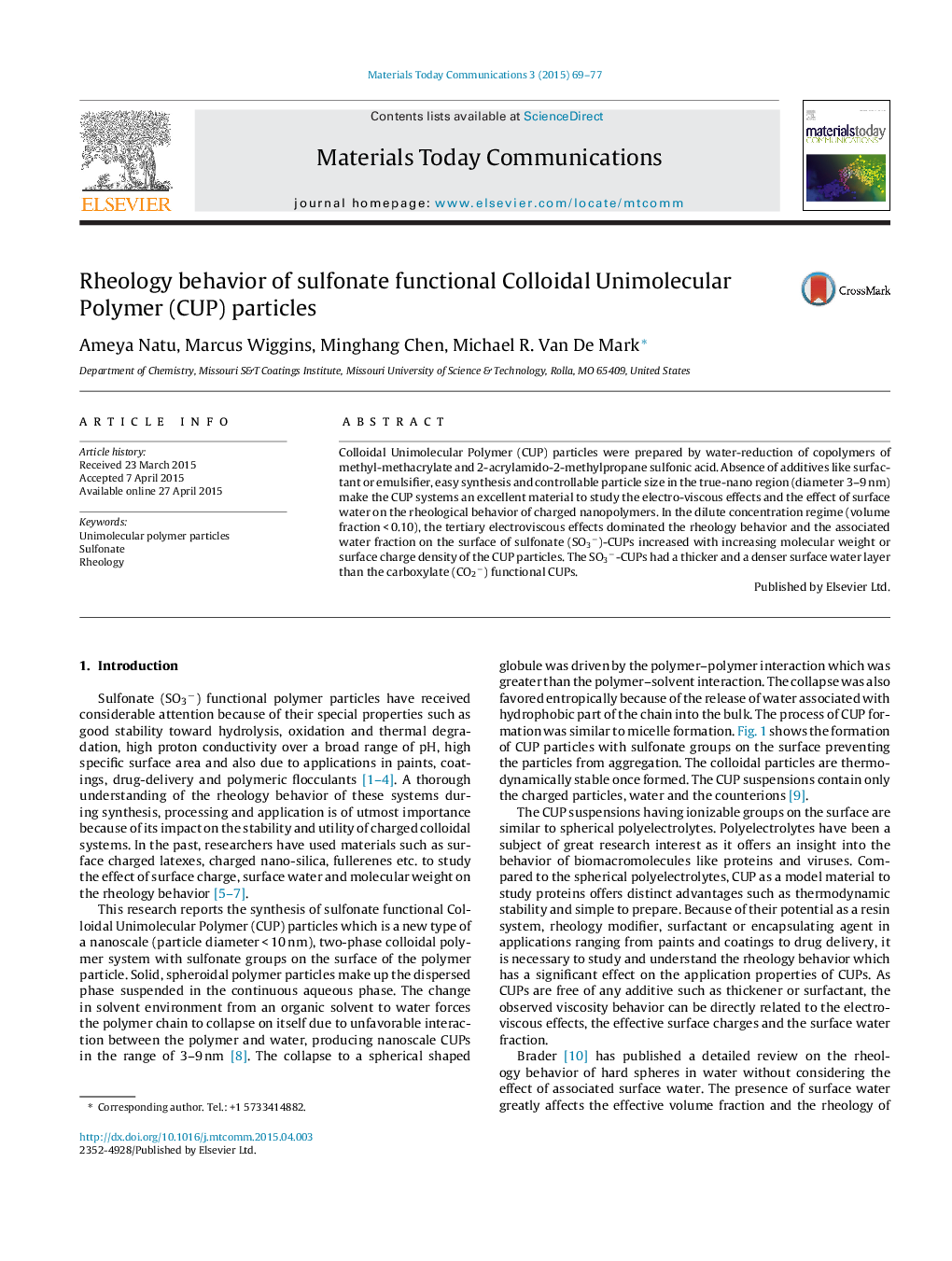| Article ID | Journal | Published Year | Pages | File Type |
|---|---|---|---|---|
| 1586202 | Materials Today Communications | 2015 | 9 Pages |
•Sulfonate functional, nano-particle dispersions were synthesized.•Surface water density was 10% greater than that of bulk water.•Viscosity increased with increasing concentration and surface charge density.•Russel's model gave a good fit to experimental viscosity.
Colloidal Unimolecular Polymer (CUP) particles were prepared by water-reduction of copolymers of methyl-methacrylate and 2-acrylamido-2-methylpropane sulfonic acid. Absence of additives like surfactant or emulsifier, easy synthesis and controllable particle size in the true-nano region (diameter 3–9 nm) make the CUP systems an excellent material to study the electro-viscous effects and the effect of surface water on the rheological behavior of charged nanopolymers. In the dilute concentration regime (volume fraction < 0.10), the tertiary electroviscous effects dominated the rheology behavior and the associated water fraction on the surface of sulfonate (SO3−)-CUPs increased with increasing molecular weight or surface charge density of the CUP particles. The SO3−-CUPs had a thicker and a denser surface water layer than the carboxylate (CO2−) functional CUPs.
Graphical abstractFigure optionsDownload full-size imageDownload as PowerPoint slide
